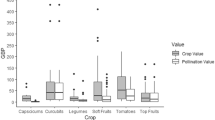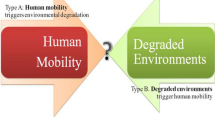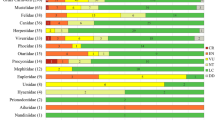Abstract
Increasing populations of large carnivores are leading to tension and conflicts with livestock production, a situation that potentially might escalate. In Norway the objective of the large carnivore policy is two-folded: to ensure viable carnivore populations and to secure a sustainable grazing industry. The main instrument is zonation, with carnivore management zones (CMZs) prioritized for reproduction of the large carnivore species separated from other areas prioritized for grazing livestock. The objective of this paper is to describe current knowledge about the impact of the zoning management strategy on the grazing industry. This is done by documenting status and changes in sheep production, losses of livestock to predating carnivores, and the use of grazing areas inside and outside the CMZs. CMZs offering protection for lynx, wolverine, bear and wolf cover 55% of the Norwegian mainland. 30% of the sheep and 50% of the Sami reindeer grazing areas are found inside the CMZs. Livestock (semi-domestic reindeer excluded) is using 59% of the available natural pasture areas outside the CMZs, but only 26% inside the CMZs. The lowest use of available grazing areas was found inside zones for wolves (12%) and brown bears (6%). Livestock in these zones are confined to fenced enclosures, mostly on the farm itself, or moved to pastures outside the management zone for summer grazing. Livestock losses increased in the affected regions during the period when carnivores were reestablished. Later, losses declined when CMZs were established and mitigation efforts were implemented in these zones. The bulk of sheep and reindeer killed by carnivores are now found in boundary areas within 50 km off the CMZs, where sheep are still grazing on open mountain and forest ranges. Therefore, instruments to protect livestock in areas close to the CMZs are also needed. The number of sheep declined inside the CMZs from 1999 to 2014, but increased outside the zones. The reduction in the absolute number of sheep in the CMZs is balanced by a similar increase outside, thus the total sheep production in Norway is maintained. We conclude that although of little consequence for the total food production in Norway, the economic and social impact of the large carnivore management strategy can be serious for local communities and individual farmers who are affected. There is a need for more exact carnivore population monitoring to quantify the carnivore pressure, better documentation of reindeer losses, and a clearer and stricter practicing of the zoning strategy. Increased involvement of social sciences is important in order to understand the human dimension of the carnivore conflicts.
Similar content being viewed by others
References
Almås R (2004) Norwegian Agricultural History. Tapir Academic Press, Trondheim
Aryal A, Brunton D, Ji W, et al. (2014) Human-carnivore conflict: ecological and economical sustainability of predation on livestock by snow leopard and other carnivores in the Himalaya. Sustainability Science 9: 321–329. https://doi.org/10.1007/s11625-014-0246-8
Blekesaune A, Rønningen K (2010) Bears and fears: Cultural capital, geography and attitudes towards large carnivores in Norway. Norwegian Journal of Geography 64: 185–198. https://doi.org/10.1080/00291951.2010.528225
Bryn A, Dourojeanni P, Hemsing LØ, O’Donnell S (2013) A high-resolution GIS null model of potential forest expansion following land use changes in Norway. Scandinavian Journal of Forest Research 28: 81–98.
Bryn A, Strand GH, Angeloff M, et al. (2018) Land cover in Norway based on an area frame survey of vegetation types. Norwegian Journal of Geography 72: 131–145. https://doi.org/10.1080/00291951.2018.1468356
Bye AS, Aarstad PA, Løvberget AI, et al. (2014) Agriculture and environment — status and development 2013. ISSB Report 2014/10, Statistics Norway. (In Norwegian)
Chapron G, Kaczensky P, Linnell JDC, et al. (2014) Recovery of large carnivores in Europe’s modern human-dominated landscapes. Science 346: 1517–1519. https://doi.org/10.1126/science.1257553
Cuicci P, Boitani L (1998) Wolf and dog depredation on livestock in central Italy. Wildlife Society Bulletin 26: 504–514.
de Azevedo FC, Murray DL (2007) Evaluation of potential factors predisposing livestock to predation by jaguars. Journal of Wildlife Management 71: 2379–2386. https://doi.org/10.2193/2006-520
Diemont M, Du Plessis J, Minnie L, et al. (2017) Livestock predation in South Africa: The need for and value of a scientific assessment. South African Journal of Science 113(3–4): 1–3. https://doi.org/10.17159/sajs.2017/a0198
Dorresteijn I, Hanspach J, Kecskés A, et al. (2013) Human-carnivore coexistence in a traditional rural landscape. Landscape Ecology 29: 114–1155. https://doi.org/10.1007/s10980-014-0048-5
Dressel S, Sandström C, Ericsson G (2015) A meta-analysis of studies on attitudes toward bears and wolves across Europe 1976–2012. Conservation Biology 29: 565–574. https://doi.org/10.1111/cobi.12420
Douma JC, de Haan MWA, Aerts R, et al. (2012) Succession-induced trait shifts across a wide range of NW European ecosystems are driven by light and modulated by initial abiotic conditions. Journal of Ecology 100: 366–380. https://doi.org/10.1111/j.1365-2745.2011.01932.x
Forbord M, Bjørkhaug H, Burton RJF (2014) Drivers of change in Norwegian agricultural land control and the emergence of rental farming, Journal of Rural Studies 33: 9–19. https://doi.org/10.1016/j.jrurstud.2013.10.009
Hansen I, Strand GH, de Boon AIB, et al. (2018) Effects of Norwegian large carnivore policy on national grazing industry.In: Lind V, et al. (eds.), 20th meeting of the FAOCIHEAM Mountain Pasture Network 9th — 12th September 2018, Adapting Innovation in Grassland Management, NIBIO Bok 11/2018, Ås. pp 85–93.
Hansson-Forman K, Reimerson E, Sjölander-Lindqvist A, et al. (2018) Governing Large Carnivores-Comparative Insights from Three Different Countries. Society & Natural Resources 31: 837–852. https://doi.org/10.1080/08941920.2018.1447179
Harvey D (1969) Explanation in Geography, Edward Arnold, London.
Hautier Y, Niklaus PA, Hector A (2009) Competition for light causes plant biodiversity loss after eutrophication. Science 324: 636–638. https://doi.org/10.1126/science.1169640
Howery LD, DeLiberto TJ (2004) Indirect effects of carnivores on livestock foraging behaviour and production. Sheep and Goat Research Journal 19: 53–57.
Kaltenborn BP, Bjerke T (2002) The relationship of general life values to attitudes toward large carnivores. Human Ecology Review 9: 55–61.
Klima-og miljødepartementet (2017) Regulations for the management of large carnivores in Norway. https://lovdata.no/dokument/SF/forskrift/2005-03-18-242, accessed on 12 July 2018. (In Norwegian)
Krange O, Tangeland T, Skogen K (2011) Population goals for large carnivores. What do people mean about them and who is to decide? NINA Rapport 657: 1–74. (In Norwegian)
Krange O, Sandström C, Tangeland T, et al. (2017) Approval of Wolves in Scandinavia: A Comparison Between Norway and Sweden. Society & Natural Resources 30: 1127–1140.
Landbruksdirektoratet (2017a) Statistics of numbers. https://www.landbruksdirektoratet.no/no/statistikk/produksjonstilskudd, accessed on 12 July 2018. (In Norwegian)
Landbruksdirektoratet (2017b) Production results for the reindeer husbandry sector — economic result 2016 and budget 2017. Rapport Nr. 33/2017. (In Norwegian)
Landbruksdirektoratet (2017c) Organized Outfield Grazing. https://www.landbruksdirektoratet.no/no/miljo-og-okologisk/regionalt-miljotilskudd/organisert-beitebruk#statistikk, accessed on 12 July 2018. (In Norwegian)
Linnell JDC, Smith ME, Odden J, et al. (1996) Carnivores and sheep farming in Norway. Strategies for the reduction of carnivore-livestock conflicts: a review. NINA Oppdragsmelding 443: 1–118.
Linnell JDC, Odden J, Smith ME, et al. (1999) Large carnivores that kill livestock: do “problem individuals” really exist? Wildlife Society Bulletin 27: 698–705.
Linnell JDC, Swenson JE, Andersen R (2000) Conservation of biodiversity in Scandinavian boreal forests: large carnivores as flagships, umbrellas, indicators, or keystones? Biodiversity and Conservation 9: 857–868. https://doi.org/10.1023/A:1008969104618
Linnell J, Swenson J, Anderson R (2001) Predators and people: Conservation of large carnivores is possible at high human densities if management policy is favourable. Animal Conservation 4: 345–349. https://doi.org/10.1017/S1367943001001408
Loreau M (2000) Biodiversity and ecosystem functioning: recent theoretical advances. Oikos 91: 3–17. https://doi.org/10.1034/j.1600-0706.2000.910101.x
Lyamuya R, Masenga EH, Fyumagwa RD, et al. (2014) Human-carnivore conflict over livestock in the eastern part of the Serengeti ecosystem, with a particular focus on the African wild dog Lycaon pictus. Oryx 48: 378–384. https://doi.org/10.1017/S0030605312001706
Mabille G, Stien A, Tveraa T, et al. (2016) Mortality and lamb body mass growth in free-ranging domestic sheep — environmental impacts including lethal and non-lethal impacts of predators. Ecography 39: 763–773. https://doi.org/10.1111/ecog.01379
Mattiello S, Brescani T, Gaggero S, et al. (2012) Sheep predation: Characteristics and risk factors. Small Ruminant Research 105: 315–320. https://doi.org/10.1016/j.smallrumres.2012.01.013
Meuret M, Garde L, Moulin CH, et al. (2017) Livestock farming and wolves in France: history, situation appraisal and solution pathway. INRA Productions Animales 30: 465–478.
Olsen K, Sunde P (2018) Monitoring the wolf population in Denmark — Status report, 4th quartile 2017. Notat fra Århus Universitet og Naturhistorisk museum Århus, 1–10. (In Danish)
Olsson EGA, Hanssen S, Rønningen K (2004) Different conservation values of biological diversity? A case study from the Jotunheimen mountain range, Norway. Norsk Geografisk Tidsskrift-Norwegian Journal of Geography 58: 204–212. https://doi.org/10.1080/00291950410002700
Palmeira FBL, Crawshaw PG, Haddad CM, et al. (2008) Cattle depredation by puma (Puma concolor) and jaguar (Panthera onca) in central-western Brazil. Biological Conservation 141: 118–125. https://doi.org/10.1016/j.biocon.2007.09.015
Pekor A, Seki OW, Jansson I, et al. (2018) Assessing the feasibility of establishing a conservation incentive payment program to mitigate human — lion conflict in the Ngorongoro conservation area. Findings and recommendations. Korongoro People’s Lion Initiative (KoPe Lion), February 2018.
Pentha SM, Myklevold M, Skorge LTV, et al. (2014) Reindeer farming activity in Norway. Norsk Veterinærtidsskrift 126: 89–93. (In Norwegian)
Pohja-Mykrä M (2017) Community power over conservation regimes: techniques for neutralizing the illegal killing of large carnivores in Finland. Crime, Law and Social Change 67: 439–460. https://doi.org/10.1007/s10611-016-9666-y
Potthoff K (2009) Grazing history affects the tree-line ecotone: a case study from Hardanger, Western Norway. Fennia-International Journal of Geography 187(2): 81–98.
Potthoff K, Stroth V (2011) Patterns of vegetation change on alpine mountain summer farms in Norway. Geografiska Annaler: Series A, Physical Geography 93: 163–174.
Ray JC, Redford KH, Steneck RS et al. (eds.) (2005) Large Carnivores and the Conservation of Biodiversity. Island Press, Washington.
Rekdal Y (2016) Rangeland pasture. In: Strand GH (ed.), Impacts of large carnivores on agriculture and food production based on Norwegian resources. NIBIO Report 2(63): 27–31. (In Norwegian)
Rigg R, Findo S, Wechselberger M, et al. (2011) Mitigating carnivore-livestock conflict in Europe: lessons from Slovakia. Oryx 45: 272–280. https://doi.org/10.1017/S0030605310000074
Riksrevisjonen (2019) A study of the national large carnivore management strategy by The Office of the Auditor General of Norway. Dokument 3:13(2018–2019), 1–15. (In Norwegian)
Røskaft E, Händel B, Bjerke T et al. (2007) Human attitudes towards large carnivores in Norway. Wildlife Biology 13: 172–185. https://doi.org/10.2981/0909-6396(2007)13[172:HATLCI]2.0.CO;2
Sandström C, Sjölander-Lindqvist A, Pellikka J, et al. (2018) Between politics and management: governing large carnivores in Fennoscandia. In: Hovardas T (ed.), Large Carnivore Conservation and Management, Human Dimensions. Oxon. https://doi.org/10.4324/9781315175454
Sjölander-Lindqvist A, Bendz A, Cinque S, et al. (2018) Research amidst the contentious issue of wolf presence: exploration of reference frames and social, cultural, and political dimensions. In: Hovardas T (ed.), Large Carnivore Conservation and Management. Human Dimensions. Oxon. https://doi.org/10.4324/9781315175454
Skogen K (2003) Adapting adaptive management to a cultural understanding of land use conflicts. Society and Natural Resources 16: 435–450. https://doi.org/10.1080/08941920309180
Speed JDM, Austrheim G, Hester AJ, et al. (2010). Experimental evidence for herbivore limitation of the treeline. Ecology 91: 3414–3420. https://doi.org/10.1890/09-2300.1
Speed JD, Austrheim G, Hester AJ, et al. (2012) Elevational advance of alpine plant communities is buffered by herbivory. Journal of Vegetation Science 23: 617–625. https://doi.org/10.1111/j.1654-1103.2012.01391.x
Statistisk sentralbyrå (2018) Livestock management. https://www.ssb.no/jord-skog-jakt-og-fiskeri/statistikker/jordhus, accessed on 5 January 2019. (In Norwegian)
Steele JR, Rashford BS, Foulke TK, et al. (2013) Wolf (Canis lupus) predation impacts on livestock production: Direct effects, indirect effects, and implications for compensation ratios. Rangeland Ecology and Management 66: 539–544. https://doi.org/10.2111/REM-D-13-00031.1
Stortinget (2011) Parliament Decision 687 (June 17th 2011) over Proposal 163 S (Dokument 8: 163 S (2010–2011). https://www.stortinget.no/no/Saker-og-publikasjoner/Vedtak/Vedtak/Sak/?p=50863 (Accessed on 19th September 2019) (In Norwegian)
Strand GH (2013) The Norwegian area frame survey of land cover and outfield land resources. Norwegian Journal of Geography 67: 24–35. https://doi.org/10.1080/00291951.2012.760001
Strand GH (2016) Impacts of large carnivores on agriculture and food production based on Norwegian resources. NIBIO Report 2(63): 1–128. (In Norwegian)
Strand GH (2018) Sheep grazing in wolf management zones. NIBIO Report 4(121): 1–100. (In Norwegian)
Vandvik V, Birks HJB (2002) Partitioning floristic variance in Norwegian upland grasslands into within-site and between-site components: are the patterns determined by environment or by land-use? Plant Ecology 162: 233–245. https://doi.org/10.1023/A:1020322205469
Vandvik V, Birks HJB (2004) Mountain summer farms in Røldal, western Norway-; vegetation classification and patterns in species turnover and richness. Plant Ecology 170: 203–222. https://doi.org/10.1023/B:VEGE.0000021669.61982.d9
Wehn S (2009) A map-based method for exploring responses to different levels of grazing pressure at the landscape scale. Agriculture, Ecosystems & Environment 129: 177–181. https://doi.org/10.1016/j.agee.2008.08.009
Wehn S, Pedersen B, Hanssen SK (2011) A comparison of influences of cattle, goat, sheep og reindeer on vegetation changes in mountain cultural landscapes in Norway. Landscape and Urban Planning 102: 177–187. https://doi.org/10.1016/j.landurbplan.2011.04.003
Wehn S, Johansen L, Hovstad KA (2018) The relationships gesbetween biodiversity and ecosystem services and the effect of grazing cessation in semi-natural grasslands. Web Ecology 18: 55–65. https://doi.org/10.5194/we-18-55-2018
Weaver JL, Paquet PC, Ruggiero LF (1996) Resilience and conservation of large carnivores in the Rocky Mountains. Conservation Biology 10: 964–976. https://doi.org/10.1046/j.1523-1739.1996.10040964.x
Widman M, Elofsson K (2018) Costs of livestock depredation by large carnivores in Sweden 2001 to 2013. Ecological Economics 143: 188–198. https://doi.org/10.1016/j.ecolecon.2017.07.008
Acknowledgement
This research was funded by the Norwegian Research Council as part of project no. 267982/E50 Grazing resources, carnivores and local communities (Local Carnivore).
Author information
Authors and Affiliations
Corresponding author
Rights and permissions
About this article
Cite this article
Hansen, I., Strand, GH., de Boon, A. et al. Impacts of Norwegian large carnivore management strategy on national grazing sector. J. Mt. Sci. 16, 2470–2483 (2019). https://doi.org/10.1007/s11629-019-5419-6
Received:
Revised:
Accepted:
Published:
Issue Date:
DOI: https://doi.org/10.1007/s11629-019-5419-6




